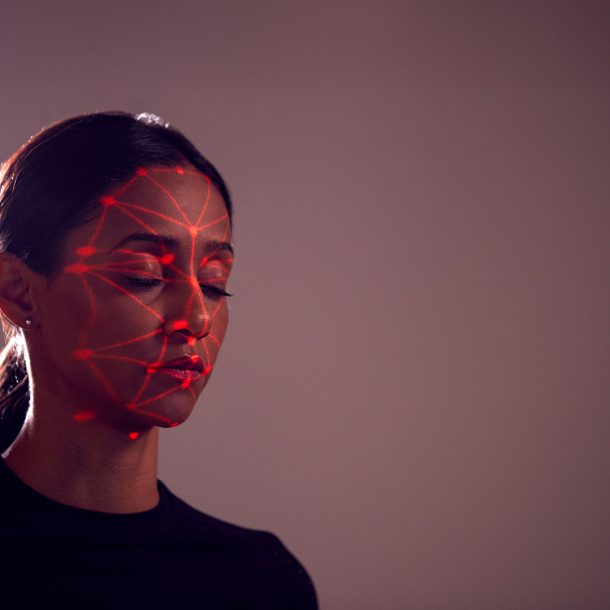
Any company that wants to confirm the legitimacy and identity of its users/customers must implement the customer onboarding procedure. Traditional means of authentication, such as passwords or PINs, are no longer sufficient to assure security and confidence due to the increase in digital crime and identity theft. Because of this, an increasing number of companies are utilizing liveness detection in their biometric solutions. For liveness detection, EnQualify‘s AI-powered motion-based algorithm may examine life signs like blinking or head movement. Dynamic prompts also add an unbreakable degree of security by making the entire procedure unique.
Read on to find out the specifics of how it ensures users’ and customers’ safety and what is liveness detection in detail.
The process of identifying whether the source of a biometric sample—such as a fingerprint or face—is a real person or a synthetic image is known as “liveness detection.” The system employs algorithms to examine biometric sensor data to identify potential spoofing attempts or indications of life. Liveness detection, for instance, can tell the difference between a genuine face and one captured in a picture, a video, a mask, or a liveness detection model.
In biometric systems, liveness detection is crucial for reducing fraud and boosting security. Without it, a hacker might easily fool a system by imitating or stealing a legitimate user’s biometric feature. An additional degree of security is provided by liveness detection, which guarantees that only the authentic biometric information required for identification is recorded.
Applications that need quick and safe user authentication can employ liveness detection, including:
Customers may use liveness detection to apply for loans, conduct transactions, and access their accounts by using their face or fingerprint as a password. It can also stop fraudsters from gaining illegal access by stopping them from using stolen devices or phony biometrics.
Using their biometrics rather than cards, keys, or codes, workers, guests, or customers may be able to access restricted areas or facilities thanks to liveness detection. It can also stop hackers from entering by using forged credentials or fake biometrics.
During the registration procedure, liveness detection can assist businesses in confirming the legitimacy and identification of their clients. Verifying consumers’ identity can also lower the risk of identity theft, money laundering, and other fraudulent actions.
Fraud prevention, user identity, and onboarding provide issues for e-commerce systems. Liveness detection streamlines the customer onboarding process and may be used to verify an online shopper’s identification during purchases and account formation. Retailers who sell age-restricted goods, such as tobacco or alcohol, can use liveness detection and age verification systems to remotely confirm the age of their customers.
Strong security is required for digital transactions in the de-fi sector, and since cryptocurrencies are decentralized, thieves find them appealing. Digital assets are further secured by liveness detection, which guarantees that transactions are only carried out by real people.
In the insurance industry, confirming a policyholder’s identification is crucial when registering a claim. Face verification lowers the possibility of fraudulent claims and boosts the effectiveness of the claims procedure by confirming that the person filing a claim is, in fact, the policyholder.
Ensuring the protection of confidential data and verifying contacts are critical in public sector organizations. When people use liveness detection technology to access online government services like tax filing or permit applications, their identities are verified. Hence, the daily activities become easier and more secure.
When a consumer wishes to utilize a service or product, creating and validating a new account is known as customer onboarding. Typically, it entails gathering personal data, confirming identity papers, and doing background checks. Building client trust, loyalty, and compliance is a key goal of customer onboarding.
Let’s look at which problems liveness detection can solve and understand why it is important.
Users may create fictitious accounts or get access to services for which they are ineligible by providing papers, biometrics, or fraudulent or stolen information. Businesses may be at risk for financial, reputational, and legal issues. In that case, liveness detection is a crucial feature to eliminate these problems.
Organizations must adhere to several laws and guidelines, including GDPR (General Data Protection Regulation), AML (Anti-Money Laundering), and KYC (Know Your Client), that control client identity and verification. This may necessitate a great deal of paperwork, audits, and reporting, which might raise the cost and complexity of operations.
Using their smartphone or camera, customers may finish the onboarding process in a matter of minutes. To demonstrate their liveliness, all they need to do is snap a photo or scan their fingerprint while adhering to some easy steps. They are spared from dealing with paperwork, hold-ups, or mistakes.
Authenticators commonly employ LD technology in a few distinct methods to thwart presentation assaults. Although there are an equal number of spoofing attacks developed to counter LD methods, the following are some of the most prevalent instances.
Currently, three primary types of liveness monitoring are accessible: passive, active, and hybrid. Passive liveness checks, such as a phone facial recognition system that detects the user’s face and natural movements like blinking to verify authenticity, occur in the background without requiring user input. These tests are frequently regarded as a frictionless alternative to liveness verifying.
Active liveness detection, conversely, necessitates user involvement in some fashion, such as conducting a side-to-side eye movement or angling the head in response to on-screen instructions. As a result of combining the two, hybrid solutions are both visible and less intrusive. Developers generally choose passive or hybrid liveness detection methods whenever feasible due to their user experience-friendly functionality.
Liveness detection and video verification are potent technologies that can improve customer onboarding by establishing a secure, reliable, and prompt method for validating the identity and authenticity of customers. In addition to increasing consumer retention, loyalty, and satisfaction, businesses can reduce operational risks, costs, and complexity by integrating these technologies.
The EnQualify liveness check feature incorporates highly acclaimed algorithms recognized by NIST. With anti-spoofing measures to effectively detect and prevent fraudulent attempts using both images and video streams, EnQualify’s system also performs assessments of image quality and accurately identifies face landmark points. Furthermore, EnQualify’s face recognition and liveness check solution fully complies with various global privacy regulations, including GDPR, CCPA, KYC, eIDAS, and AML.



Industries
Company
Resources
Copyrights © EnQualify | All rights reserved. Privacy Policy | Cookie Policy | Terms of Use | Security & Compliance